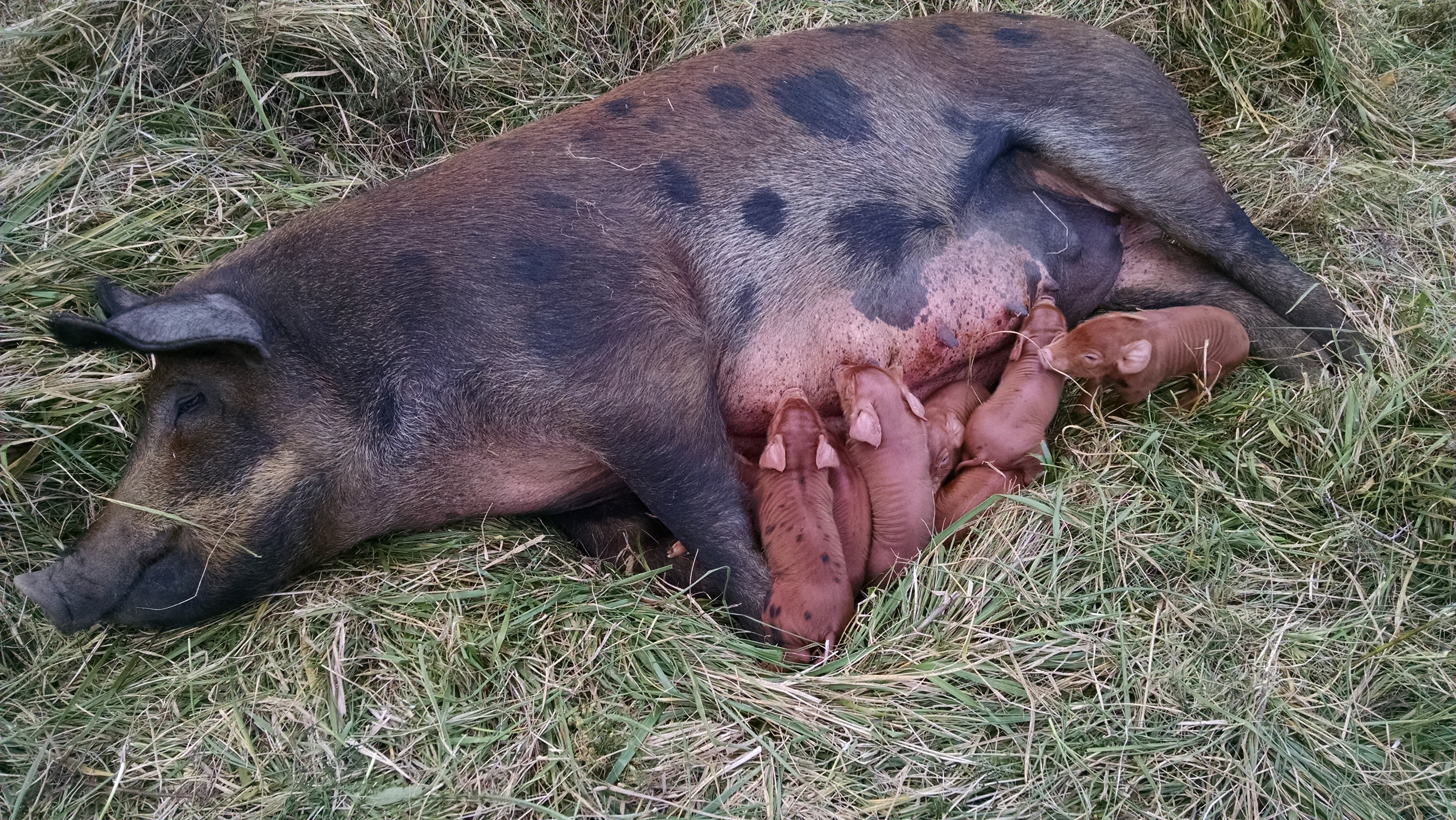Fall weather descended upon us and, unacclimated as we are, we’ve been shivering. The cattle must have seen the cold weather coming because they all have begun thickening their coats. The pigs don’t seem to appreciably increase their coats; their cold weather strategy is more aligned with marine mammals, protecting themselves from the cold with an insulating layer of blubber.
Today was blustery and just a few degrees above freezing, tonight we’ll be dropping to the low 20s. In my experience with my pigs on my pastures (how’s that for a disclaimer?), pasture farrowing is a simple proposition down to about 20 degrees. Below 20 degrees I like to provide some sort of shelter. We have had sows ignore our shelters and farrow outdoors in colder weather with great success, but the risks are higher for piglet mortality. My 20 degree threshold is something that needs to be qualified by weighing extenuating circumstances like freezing rain or soggy ground. Cold, wet weather is tough on piglets. Practically, this means that I can pasture farrow from mid-April until the beginning of October.

The above pictured sow did a great job of nest building this morning, gathering mouthfuls of grass and crafting her nesting spot. Some sows build one or several nests, sometimes starting a few days early. This one was enthusiastic enough to build two. The nests are fluffed except in the middle, allowing the piglets to burrow under the insulating grass. In the summer the piglets rarely bury themselves, but in chilly weather they spend most of their first day or two submerged. If you were to stick your hand into the pocket where the piglets are sheltering you’d find that they quickly create a warm den using their collective body heat.
Any time the piglets burrow under the hay there is a higher risk for the sow to crush piglets by laying on them. A good sow has the ability to hear through all the clamoring sounds to discern when her piglets are being smothered. We aren’t completely where we’d like to be with this maternal ability, but I think with continued selection and culling we’ll approach the goal of increased maternal competence.

2 thoughts on “Pasture Farrowing in the Fall”
I hope the piglets make it. Would they go to the shelter on their own if there was light/warmth there?
That group of piglets is doing fine. These days the small pond next to their pasture is freezing overnight and then thawing during the day, so we are dealing with climactic conditions quite different from yours. As far as what the sows would choose if they had a choice, that is hard to say what motivates them. They often don’t farrow under shelter, even when it is especially hot or cold. And sometimes the sows will build several nests before settling in one; often the nests are close together with no obvious advantage of one versus the others.